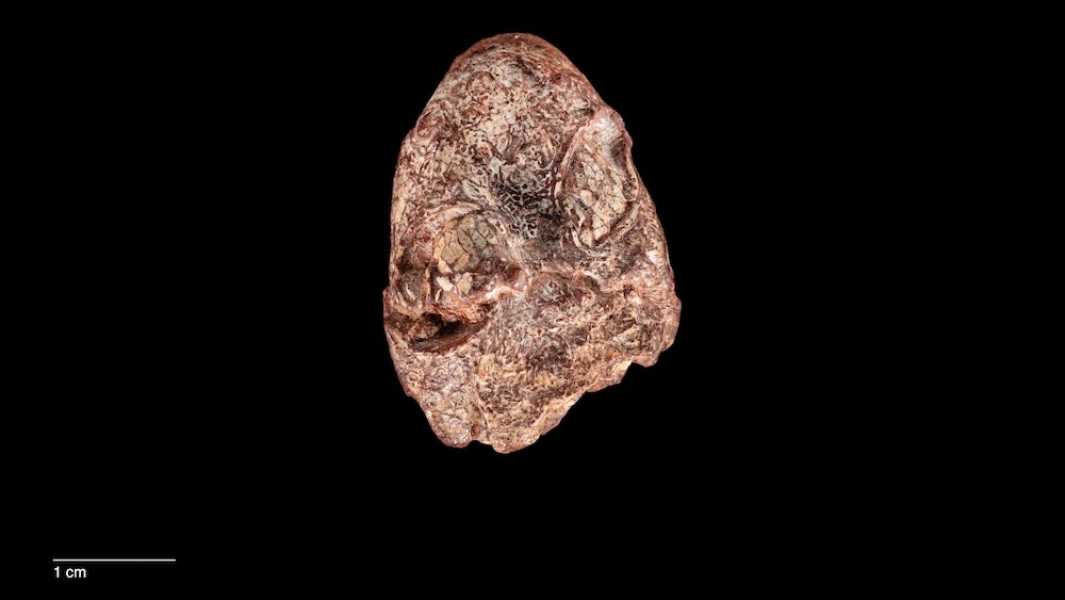
This is the fossilized skull of an ancient amphibian named after Kermit the Frog. (Photo credit: Brittany M. Hance, Smithsonian/University of California)
A newly described species of protoamphibian that lived 270 million years ago has been named after Kermit the Frog.
Paleontologists at the Smithsonian's National Museum of Natural History have once again stumbled upon the fossilized skull of an ancient amphibian ancestor while combing through the institution's archives, the statement said.
The creature's “cartoonishly wide-eyed eyes” immediately reminded researchers of the Muppet character Kermit the Frog, so the scientists named the species Kermitops gratus. They described the animal in a study published Wednesday (March 21) in the Zoological Journal.
“Using the name Kermit has important implications for how we can connect the science that paleontologists do in museums to a wider audience,” lead study author Calvin So, a graduate student in biological sciences at George Washington University, said in a press release. “Because this animal is a distant ancestor of modern amphibians, and Kermit is a modern icon of amphibians, the name was a perfect fit.”
The skull, which is about an inch (2.5 cm) long and has “oval eye sockets,” was first discovered by Nicholas Hotton III, a paleontologist and curator at the Smithsonian Institution. Hotton discovered the skull while doing fieldwork in the Red Beds, a fossil-rich area in Texas. During that field season, Hotton and his team found so many fossils that “they did not have time to study them all in detail,” according to the statement.
In 2021, Arjan Mann, a postdoctoral paleontologist at the museum and co-author of the study, discovered the skull in the archives.
“One fossil immediately caught my attention – it was a really well-preserved, mostly prepared skull,” Mann said in a statement.
Paleontologists noted that the skull had unique physical characteristics that set it apart from other tetrapods, the ancient ancestors of amphibians. For example, the part of the skull containing the animal’s eye sockets “was significantly shorter than its elongated snout.” The scientists speculate that the creature likely “resembled a robust salamander” and used its longer snout to “catch small insects, like larvae,” according to the statement.
The researchers concluded that the animal was not a frog, but belonged to the order Temnospondyls, which are considered the common ancestors of the lissamphibians, a group that includes all modern amphibians such as frogs, salamanders and caecilians.
The new finding could help researchers better understand how these groups evolved and where they fit into the evolutionary tree.
“Kermitops gives us the key to bridging this significant gap in the fossil record and beginning to understand how frogs and salamanders evolved these truly specialized traits,” So said in a statement.
Jennifer NalewickiSocial Links NavigationJournalist
Jennifer Nalewicki is a former Live Science staff writer and Salt Lake City-based journalist whose work has appeared in The New York Times, Smithsonian Magazine, Scientific American, Popular Mechanics, and more. She covers a wide range of science topics, from planet Earth to paleontology and archaeology, from health to cultural issues. Before going freelance, Jennifer worked as an editor at Time Inc. She holds a bachelor’s degree in journalism from the University of Texas at Austin.
Sourse: www.livescience.com





